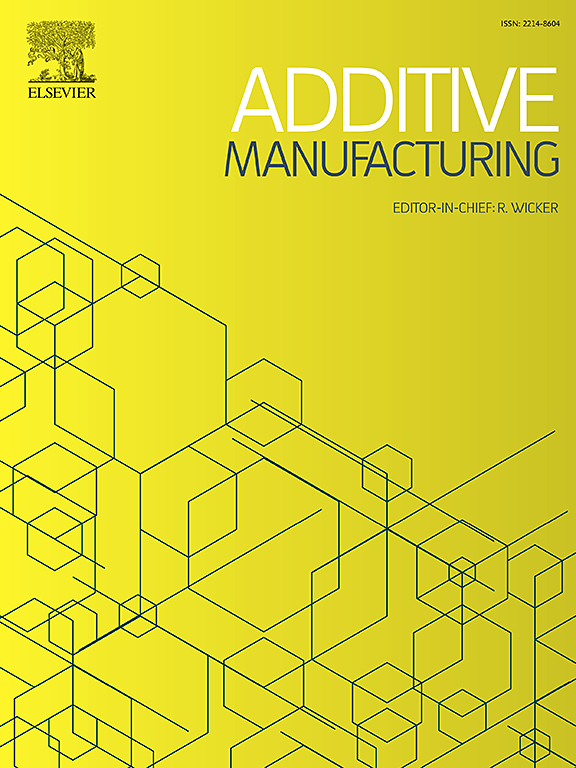采用异质输入空间的多保真度替代物,为激光引导能量沉积过程中的熔池建模
IF 10.3
1区 工程技术
Q1 ENGINEERING, MANUFACTURING
引用次数: 0
摘要
多保真度(MF)建模是一种强大的统计方法,可以智能地混合来自不同保真度来源的数据。这种方法在预测激光直接能量沉积 (L-DED) 的熔池几何形状方面有着引人注目的应用。使用 MF 代理来合并熔池模型层次的一个主要挑战是输入空间的可变性。为了应对这一挑战,本文介绍了一种新颖的方法,通过整合不同复杂度的模型,构建用于预测熔池几何形状的 MF 代理,这些模型在不同的输入空间中运行。第一个热模型包含五个输入参数,即激光功率、扫描速度、粉末流速、载气流速和喷嘴高度。相比之下,第二个热模型只能处理激光功率和扫描速度。在异构输入空间之间建立映射,从而将五维空间变形为伪二维空间。然后使用基于高斯过程的共轭方法对预测结果进行混合。由此产生的异构多保真度高斯过程(Het-MFGP)代理不仅提高了预测精度,还通过减少高维高保真热模型所需的评估来提高计算效率。测试的 Het-MFGP 预测熔池深度的 R2 值为 0.975。这超过了完全基于高维、高保真数据训练的 GP 所达到的相对较低的 R2(0.592)。同样,在预测熔池宽度时,Het-MFGP 的 R2 值为 0.943,超过了 GP 的表现,后者的 R2 值为 0.588。这些结果凸显了采用 Het-MFGP 对 L-DED 中的熔池行为进行建模的优势。该框架成功展示了如何利用多模态数据和处理某些输入参数可能难以建模或测量的情况。本文章由计算机程序翻译,如有差异,请以英文原文为准。
Multi-fidelity surrogate with heterogeneous input spaces for modeling melt pools in laser-directed energy deposition
Multi-fidelity (MF) modeling is a powerful statistical approach that can intelligently blend data from varied fidelity sources. This approach finds a compelling application in predicting melt pool geometry for laser-directed energy deposition (L-DED). One major challenge in using MF surrogates to merge a hierarchy of melt pool models is the variability in input spaces. To address this challenge, this paper introduces a novel approach for constructing an MF surrogate for predicting melt pool geometry by integrating models of varying complexity, that operate on heterogeneous input spaces. The first thermal model incorporates five input parameters i.e., laser power, scan velocity, powder flow rate, carrier gas flow rate, and nozzle height. In contrast, the second thermal model can only handle laser power and scan velocity. A mapping is established between the heterogeneous input spaces so that the five-dimensional space can be morphed into a pseudo two-dimensional space. Predictions are then blended using a Gaussian process-based co-kriging method. The resulting heterogeneous multi-fidelity Gaussian process (Het-MFGP) surrogate not only improves predictive accuracy but also offers computational efficiency by reducing evaluations required from the high-dimensional, high-fidelity thermal model. The tested Het-MFGP yields an of 0.975 for predicting melt pool depth. This surpasses the comparatively modest of 0.592 achieved by a GP trained exclusively on high-dimensional, high-fidelity data. Similarly, in the prediction of melt pool width, the Het-MFGP excels with an of 0.943, outshining the GP's performance, which registers a lower of 0.588. The results underscore the benefits of employing Het-MFGP for modeling melt pool behavior in L-DED. The framework successfully demonstrates how to leverage multimodal data and handle scenarios where certain input parameters may be difficult to model or measure.
求助全文
通过发布文献求助,成功后即可免费获取论文全文。
去求助
来源期刊

Additive manufacturing
Materials Science-General Materials Science
CiteScore
19.80
自引率
12.70%
发文量
648
审稿时长
35 days
期刊介绍:
Additive Manufacturing stands as a peer-reviewed journal dedicated to delivering high-quality research papers and reviews in the field of additive manufacturing, serving both academia and industry leaders. The journal's objective is to recognize the innovative essence of additive manufacturing and its diverse applications, providing a comprehensive overview of current developments and future prospects.
The transformative potential of additive manufacturing technologies in product design and manufacturing is poised to disrupt traditional approaches. In response to this paradigm shift, a distinctive and comprehensive publication outlet was essential. Additive Manufacturing fulfills this need, offering a platform for engineers, materials scientists, and practitioners across academia and various industries to document and share innovations in these evolving technologies.
 求助内容:
求助内容: 应助结果提醒方式:
应助结果提醒方式:


